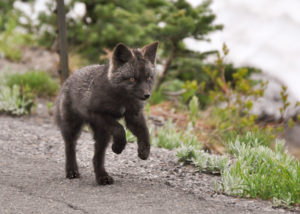Dianna is stuck in insight. She’s developed a robust understanding about why she engages in the specific undesirable thinking and behaviors she’a trying to change. How and at what point does the coach determine Dianna is stuck in insight and what does the coach do about it?
Stuck in insight – how it happens
Coaching, psychotherapy and most other approaches to adult development, rely on insight. There’s nothing like a good AHA moment to bring joy and a sense of achievement to the coach and her client, or the therapist and his patient.
I joke about The Woody Allen approach to therapy, in which the character he plays learns to describe his neurosis, and his insights about it, endlessly, while doing nothing to change. In real life, the therapist is pleased with the patient’s insights. The patient finds this rewarding and pleasurable. Because we tend to repeat what feels good, this cycle can lead to continuous insights, and little change.
In executive coaching, and in therapy, insight is not the goal. It’s an early step in the change process. When the client is stuck in insight, the coach’s obligation is to notice and do something to help the client get unstuck.
Coach’s insight about being stuck in Insight
Dianna has both wellness goals and professional growth goals along with weekly activities to help her achieve both. But she never gets to them. Dianna is insightful and understands she values others over, and before, herself. She can speak to how and why this pattern emerged. She can talk about what keeps it going. We are in one of those insightful conversations, when I feel a mental itch. I’m not focused, listening actively and deeply as I usually do. I’m bored, even slightly annoyed.
Insight is a good thing, right? So why am I, the coach, feeling this way as Dianna shares new insights?
AHA! Because I’m on the cusp of my own insight. This kind of shift in the coach’s internal state, her usual attitude and behaviors, can be a signal. Something’s different. Pay attention. So I do. Dianna and I have been down this path many times. I’m bored with the scenery and growing impatient, like a child stuck in a car during a really long road trip.
“Are we there yet?”
“No, not yet.”
“When will we be there?”
“Soon.”
“When is soon?”
The coach pounces
Unlike the child, I explore these emotions and conclude we’re stuck in insight. (Coaches, therapists, and emotionally intelligent leaders, use their thoughts, emotions and body sensations as an instrument to better understand others, and themselves.)
The safe, trusting relationship Dianna and I have created, allows me to challenge her and allows her to accept that challenge.
I pounce at the opportunity.

“Dianna, you have great insights about the problem, but I think you may be stuck in the insight whirlpool. The more tine and energy we spend there, the less energy you’ll have to pull yourself out and swim towards your goals.
Dianna is taken aback. A minute of dense silence follows. Did I pounce too suddenly, not softly enough?
“You’re right,” she says, “Time to move on.”
“How can I help?”
Unstuck and moving forward
“Well, it’s kind of paradoxical. We can use the problem to solve it. If I make a commitment to someone that I’ll do X. I’ll get it done.” Now, she’s using her insight to move forward.
“Great. What commitment are you going to make and to whom?”
“What if I commit to you that this week, I’ll…..”
“OK. Sounds good. When will you check in?”
Dianna outlines her plan. She’ll devote time to three different self-care activities.
“What might interfere with your plan?”
“Well, the usual. If someone calls and asks for my help?”
“Let’s create a plan for what you’ll do if that happens. We both know your default behavior, putting others first, will come into play. But if you have a plan, you can fall back on it at the moment you need it most.”
Dianna pens a sticky note. “I want to give you the time and attention you need and am glad to help when I can do that. Right now isn’t a good time. Let me get my calendar, and….”
Dianna contacts me four times that week. Her messages, some with photos included, convey her sense of accomplishment, satisfaction, pride and delight.

